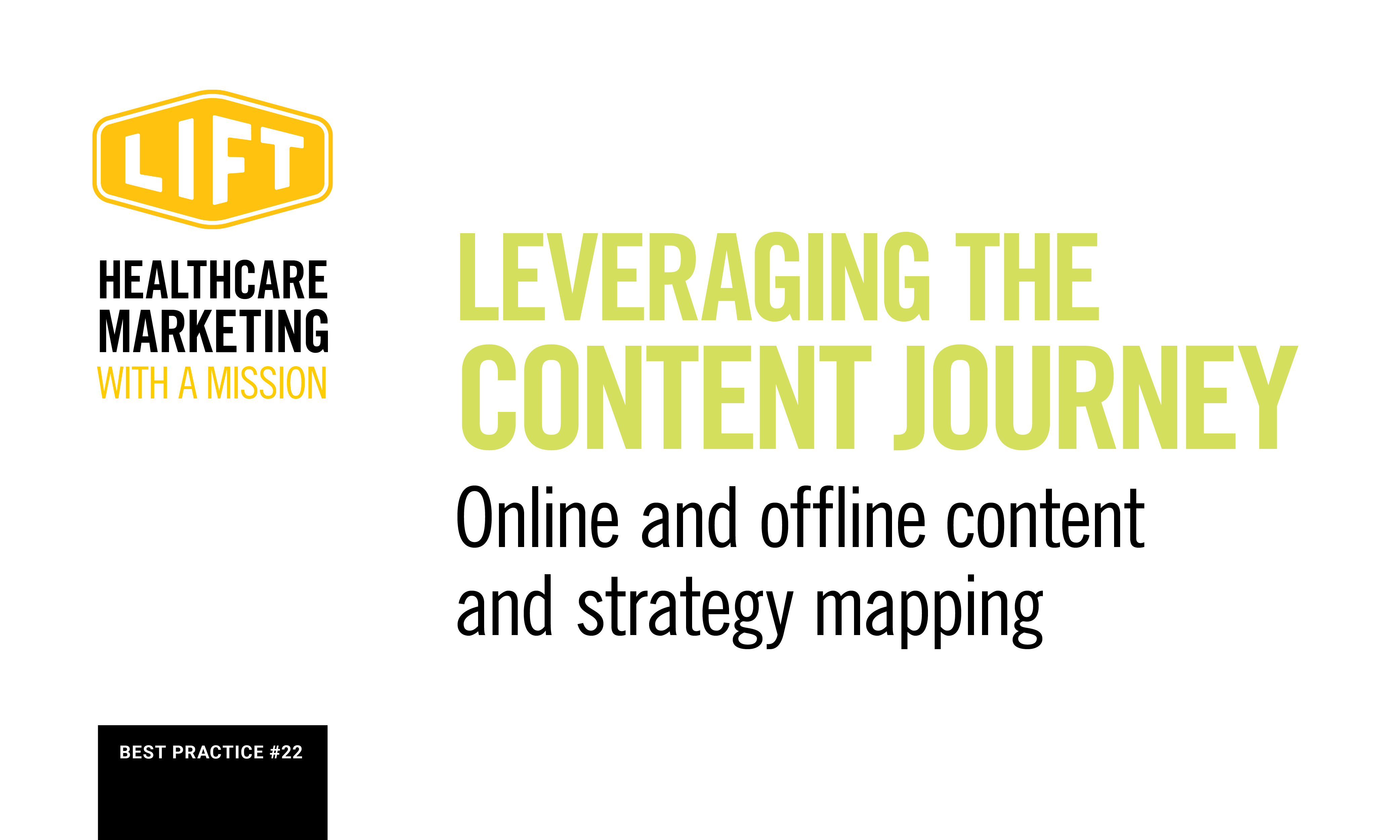Three Steps to Simplify (and Supercharge) Your Service Line Marketing
Service line marketing can be difficult, complex, and almost never clear-cut. Often, your hospital or health system’s services spill over into multiple lines, each serving a diverse population. This complexity can create confusion for your patients and damage your return on investment. But despite these challenges, having a thoughtful and effective service line marketing strategy is table stakes for today’s healthcare marketer. The good news is that you can make service line marketing more effective by refocusing your efforts and adopting a human-centered approach.
Patient-centric approaches are a major trend in healthcare marketing, and for good reason. If we don’t understand our patient, there’s a good chance we won’t be able to address their needs. But, if we use insights derived from our audience, our messaging will have a better chance of resonating. This reduces the complexity of service line marketing and uncovers new ways to boost patient engagement.
Here is a three-step process you can use to create a patient-centric service line marketing strategy.
Step 1: Know the Person
Any healthcare marketing professional will tell you that the success of his or her programs hinge on their understanding of their audience. This is especially true when creating patient-centric marketing. But knowing your audience means more than knowing their demographic profile.
Building personas informed by real-world interactions (rather than preconceived notions) is a great way to organize information and generate insights.
First, what is a healthcare persona? Personas are fictional characters rooted in real world research that helps marketers bring their target audience to life. Of course, they contain the usual metrics like demographics and attitudes on health, and more obscure information, such as hobbies, media consumption, and personal values. While these details don’t directly relate to healthcare, including them will make your personas stronger because they offer an intimate look at the hopes, fears, values, and interests of real people in your community.
The more detailed a persona is, the better they perform. A well-built persona paints a clear picture of a segment of your audience, which makes it easier to come up with ideas.
Step 2: Know the Journey
Building patient personas is a necessary but insufficient step in creating more effective healthcare marketing. Equally important is understanding the patient journey. Building journey maps allows you to build context around your patients and provide insights into marketing your service line.
So, what is a journey map? Journey maps are a method of outlining information over time. This answers the question: How do people interact with your products and services?
A journey map follows the user through a series of events that define an experience. In addition to the interaction itself, journey maps often lay out what happens before and after.
For example, consider an urgent care visit. What the patient does before they decide to use urgent care. Are they looking up medical information? Are they calling their loved ones for help? During the visit itself, how do they react to their surroundings or wait times? And after the visit, what are they doing to continue getting better?
After outlining the interactions, fill in the thoughts and emotions involved. Digging deeper provides perspectives of the patients, providers, and caregivers—who they are, where they come from, and what they care about. These insights will let you uncover important motivations behind why people do the things they do.
Step 3: Know the Touchpoints
Now that you’ve built personas and journey maps for your audience segments, it’s time to put them to use. Use touchpoint analysis to make sense of the knowledge you have. This will serve as a jumping off point to marketing your service line more effectively.
What is touchpoint analysis? Touchpoint analysis is a three-part process. First, you outline the current state of the experience, looking at interaction points for issues that can be addressed. Second, you create an ideal future state based on the needs of the patient and the hospital. Last, use the difference between the current and future states to identify healthcare marketing opportunities.
Touchpoint analysis helps you focus on what’s important to the patients. By looking at the current state, we understand the issues. By looking at the ideal future, we set an upper bound to scope creep. Having both when marketing a service line provides a clearer outline of what needs to be done. When used with personas and journey maps, touchpoint analysis becomes even more powerful.
Go for It
At the end of the day, we are looking to make life better for our patients. By following these three steps, you allow your patients a chance to define their challenges and needs. The insights you get from taking a patient-centric approach will help reduce the complexity of service line marketing.

Learn the Best Practices for Mapping Healthcare Content Journeys
Using journey maps in tandem with personas provides important context to effective healthcare marketing. Delivering the right content to the right stakeholders at the right time is table stakes for effective healthcare consumer engagement. To help you to properly align your content strategy to the appropriate stages and touch points, we have assembled this free best practice primer specifically designed for healthcare marketers like you.
